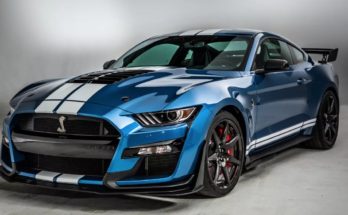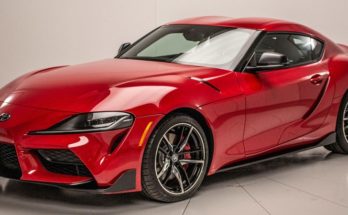How does one keep a secret in a competitive business where corporate espionage is, while illegal, encouraged? It’s certainly very difficult, but a strategy sometimes used is to have code names for projects, misleading information, and details known only to a few of the top brass. None of this worked, however, for the Plymouth Barracuda, which was almost called The Panda. Can you imagine a less vehicle-esque name? Pandas are small, slow, and adorable. Not something you want when you think of a vehicle. All the talk around the name eventually circled back to predatory animals, and the name “Barracuda” was chosen. We’ve written before about the Dodge Barracuda before and what a great name it is, but the Plymouth Barracuda is a different kettle of fish.
Prior to the Barracuda’s introduction in 1964, Plymouth designers were tasked with designing a vehicle that could compete in the sports car category. A fastback pony car built on a Chevrolet body was unveiled and the Barracuda was born. The first generation had a V6 or V8 engine, Torquelite automatic transmission, and a rear window that would become known as the biggest rear window installed (at the time) on a standard production car.
The A-body was used for the first and second generations, but was traded out for the E-body in the third generation. Unfortunately, the Barracuda fell prey to two rather large blows that spelled the end for the car: a decrease in performance due to the new rules and regulations regarding fuel emissions, and the 1973 energy crisis. With low power and more weight, as well as rising gas prices meant the Barracuda was less interesting to buyers than more practical, inexpensive models.
Nowadays, of course, since there are very few Barracudas still around, it has become one of the most sought-after cars by collectors. Vehicles that have been untouched since leaving the factory fetch the highest prices, especially if they are one of the first two generations (and therefore, high-performing). For example, the Hemi Cuda, built in 1971, is highly sought after since there were only thirteen ever produced. That particular model inspired the police vehicles on the 90’s show Nash Bridges and the last one that sold at auction came with a 3.5 million price tag.
While the 1975 Barracuda never made it to production, it has long been whispered that the pony car would make a reappearance. Rumors surfaced in 2007 and 2012, but nothing substantial was discovered until 2015, when Dodge announced that there was indeed a revival of the Barracuda in the works. It has since been discussed all over the web by collectors, enthusiasts, and hobbyists alike. While specifics are not yet known, the speculations include conversations around the sizing (will it be smaller than the Dodge Charger to compete with the likes of the Ford Mustang?), the engine type (will it be a hybrid?), and the make (will it be a convertible, a coupe, or will there be other options available to customers?).
Keep your eyes peeled for this classic beauty to make its way back into the American lexicon sometime soon.


